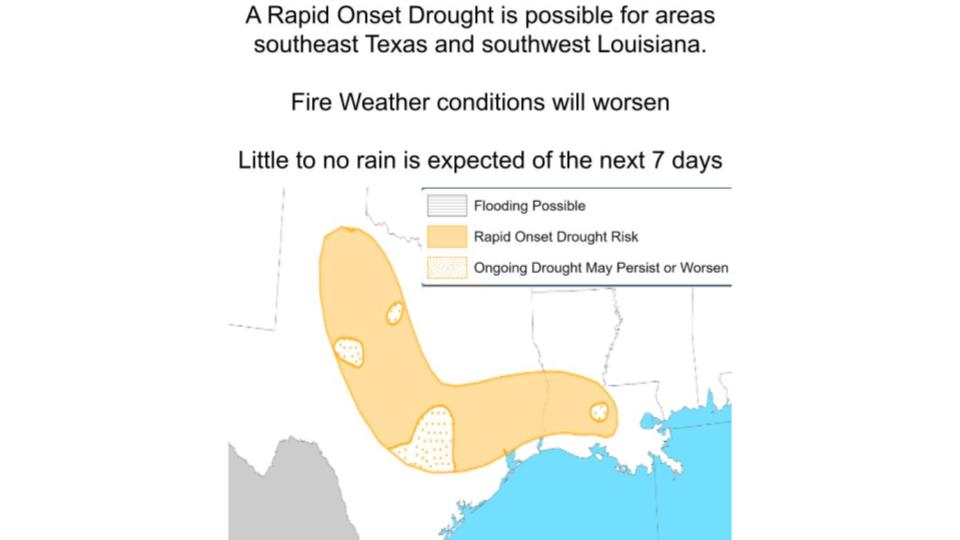Louisiana – A rapid onset drought is forecast to develop across Southeast Texas and central to Southwest Louisiana this week, with meteorologists warning that existing moderate drought conditions in the Acadiana region will likely expand.
The National Weather Service has designated the current drought level in Acadiana as D1, which represents moderate drought on the standardized drought severity scale.
Weather officials expect drought conditions to spread significantly across the region as precipitation chances remain virtually nonexistent. The combination of persistent high pressure systems and unseasonably warm temperatures is creating ideal conditions for rapid drought development.
Fire weather concerns are escalating alongside the drought conditions. The extended period of dry weather, combined with low humidity levels and potential wind patterns, increases the risk of wildfire ignition and rapid fire spread across affected areas.
Temperature forecasts show high temperatures reaching approximately 90 degrees Fahrenheit throughout the remainder of the week, with overnight lows dropping into the 60s. This temperature pattern, while not extreme for the region, contributes to increased evaporation rates and soil moisture depletion when combined with the absence of rainfall.
The warm and dry weather pattern is expected to persist, with meteorologists indicating that meaningful precipitation is not anticipated in the immediate forecast period. This extended dry spell will likely accelerate the transition from normal conditions to drought status in areas not currently experiencing water deficits.
Rapid onset drought, also known as flash drought, occurs when drought conditions develop much faster than typical seasonal drought patterns. This phenomenon can catch communities, farmers and water managers unprepared, as traditional drought monitoring systems are designed to track slower-developing conditions.
The affected region encompasses a significant portion of Louisiana’s agricultural areas, where farmers rely on adequate soil moisture for crop production. Extended drought conditions can impact livestock operations, crop yields and water supplies for rural communities.
Current atmospheric patterns suggest the high pressure system responsible for the dry conditions will remain stationary over the region, effectively blocking moisture-bearing weather systems that would normally provide relief through seasonal rainfall patterns.
